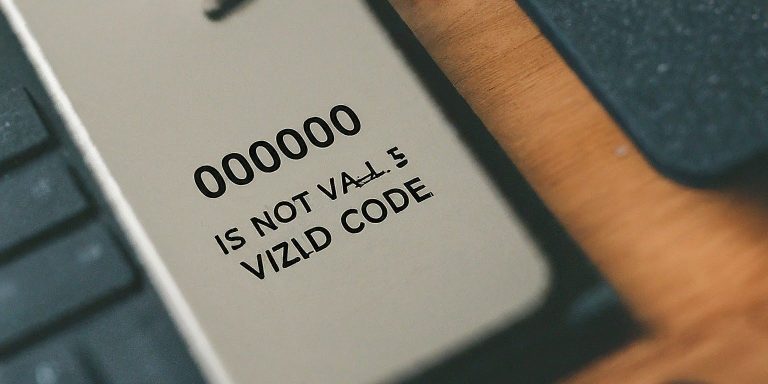In a world increasingly driven by digital connectivity and data-driven decision-making, accurate location information has become paramount. Whether for e-commerce deliveries, emergency services response, or targeted marketing campaigns, knowing the real postal code is crucial. But what exactly does this term encompass, and how does it differ from traditional postal codes? In this exclusive article, we delve into the complexities of digital location data, exploring the challenges and opportunities presented by the pursuit of the real postal code.
Contents
The Limitations of Traditional Postal Codes
Traditional postal codes, while serving their purpose for mail delivery, have inherent limitations when it comes to pinpointing precise locations. They often cover large geographical areas, making it difficult to distinguish between individual buildings or addresses within a given postal code zone. This lack of granularity can lead to inefficiencies and inaccuracies in various applications reliant on location data.
Furthermore, traditional postal codes are static and do not reflect changes in the physical landscape or address systems. New constructions, demolitions, or rezoning can render postal code data outdated, leading to mismatches between official records and the actual location of addresses. This can have significant implications for businesses and organizations relying on accurate location information for their operations.
The Emergence of Digital Location Data
With the advent of advanced technologies such as GPS, satellite imagery, and geospatial databases, a new era of digital location data has emerged. This wealth of information allows for a more granular and dynamic understanding of the physical world, enabling the identification of precise locations with unprecedented accuracy.
Digital location data encompasses a wide range of sources, including:
- GPS coordinates: These provide latitude and longitude coordinates, pinpointing a location on the Earth’s surface.
- Address point data: This includes detailed address information, such as street number, street name, city, and postal code.
- Building footprints: These define the physical boundaries of buildings, allowing for precise identification of individual structures.
- Points of interest (POIs): These mark specific locations of interest, such as businesses, landmarks, or public facilities.
By combining and analyzing these diverse data sources, it becomes possible to create a more comprehensive and accurate picture of the real world, going beyond the limitations of traditional postal codes.
The Quest for the Real Postal Code
The pursuit of the real postal code involves leveraging digital location data to achieve a higher level of accuracy and precision in location-based applications. It goes beyond simply relying on official postal code records and incorporates additional data sources to identify the exact location of an address.
This quest is driven by various factors:
- E-commerce and logistics: Accurate location data is essential for efficient and reliable delivery services. Knowing the real postal code ensures that packages reach their intended destinations without delays or errors.
- Emergency services: In critical situations, every second counts. Precise location information can help emergency responders reach the scene quickly and efficiently, potentially saving lives.
- Targeted marketing: Businesses can use location data to tailor their marketing campaigns to specific geographic areas or demographics. The real postal code allows for more targeted and effective outreach efforts.
- Urban planning and development: Accurate location data can inform decision-making in urban planning and development projects, ensuring that infrastructure and services are allocated efficiently.
Challenges and Opportunities
While the quest for the real postal code offers numerous benefits, it also presents certain challenges:
- Data quality and accuracy: The accuracy of digital location data can vary depending on the source and methodology used. Ensuring data quality and consistency is crucial for reliable location-based applications.
- Data privacy and security: Location data can be sensitive and personal. Protecting individual privacy and ensuring data security are essential considerations when working with such information.
- Data integration and interoperability: Integrating data from different sources and formats can be complex. Ensuring interoperability between various systems and platforms is necessary for seamless data sharing and analysis.
Despite these challenges, the pursuit of the real postal code also presents significant opportunities:
- Improved efficiency and accuracy: By leveraging digital location data, businesses and organizations can achieve greater efficiency and accuracy in their operations, leading to cost savings and improved customer satisfaction.
- Enhanced decision-making: Accurate location information can inform better decision-making in various domains, from urban planning to marketing and logistics.
- Innovation and new services: The availability of precise location data can spur innovation and the development of new services and applications that were not possible before.
The Future of Location Data
As technology continues to advance, the future of location data looks promising. The increasing availability and accuracy of digital location data, coupled with advancements in artificial intelligence and machine learning, will enable even more sophisticated and powerful location-based applications.
The real postal code will become an integral part of our digital lives, transforming the way we interact with the world around us. From personalized recommendations to real-time navigation and targeted services, the possibilities are endless.
Conclusion
In conclusion, the real postal code represents a paradigm shift in how we understand and utilize location information. By moving beyond traditional postal codes and embracing the power of digital location data, we can unlock a new level of accuracy, efficiency, and innovation in various fields. While challenges remain, the opportunities presented by the quest for the real postal code are immense. As we continue to explore the potential of location data, we can expect to see a transformation in the way we live, work, and interact with the world around us.
Read More: Random.zip Code: Unraveling the Mystery of the Enigmatic Digital Archive






